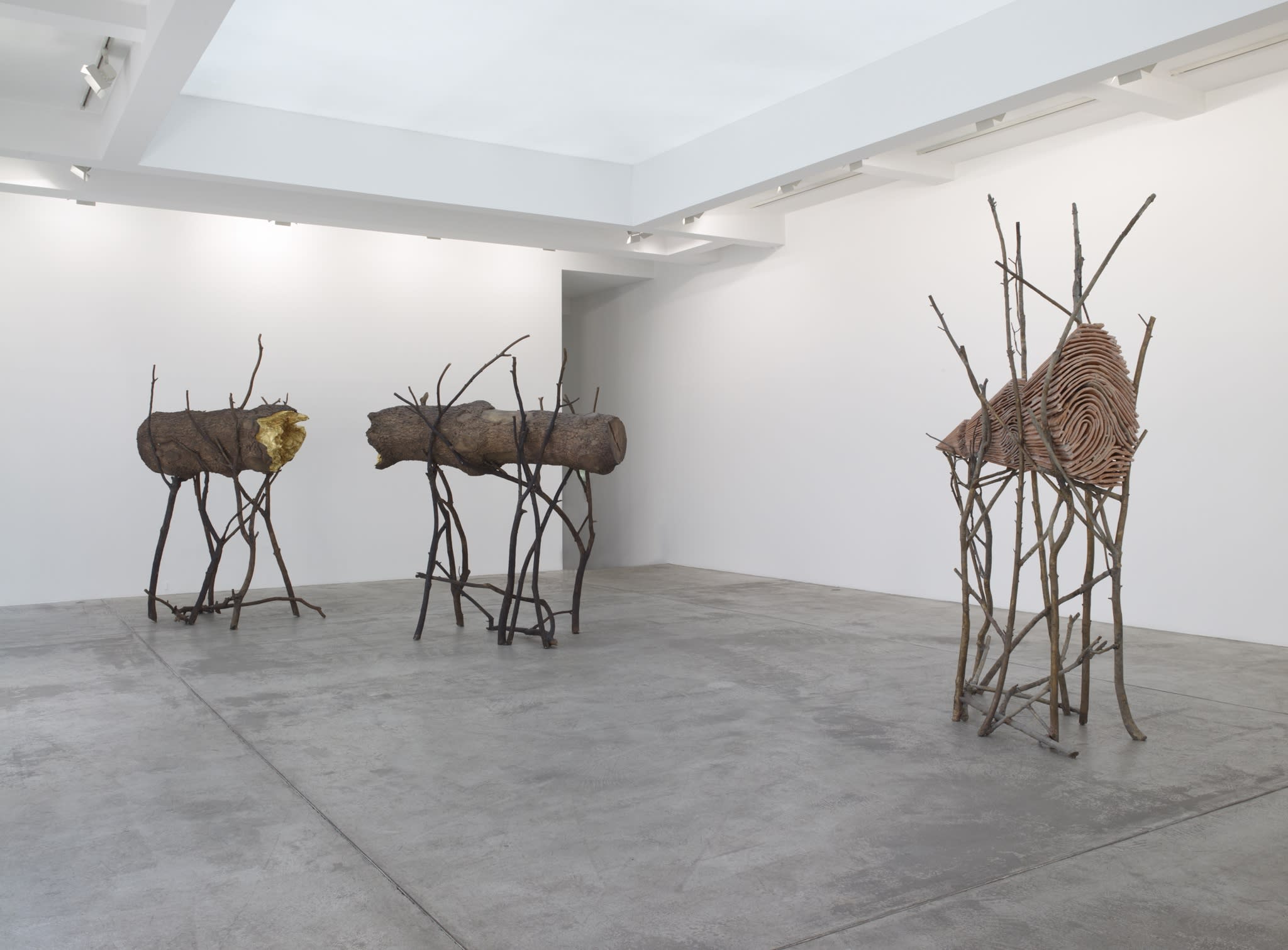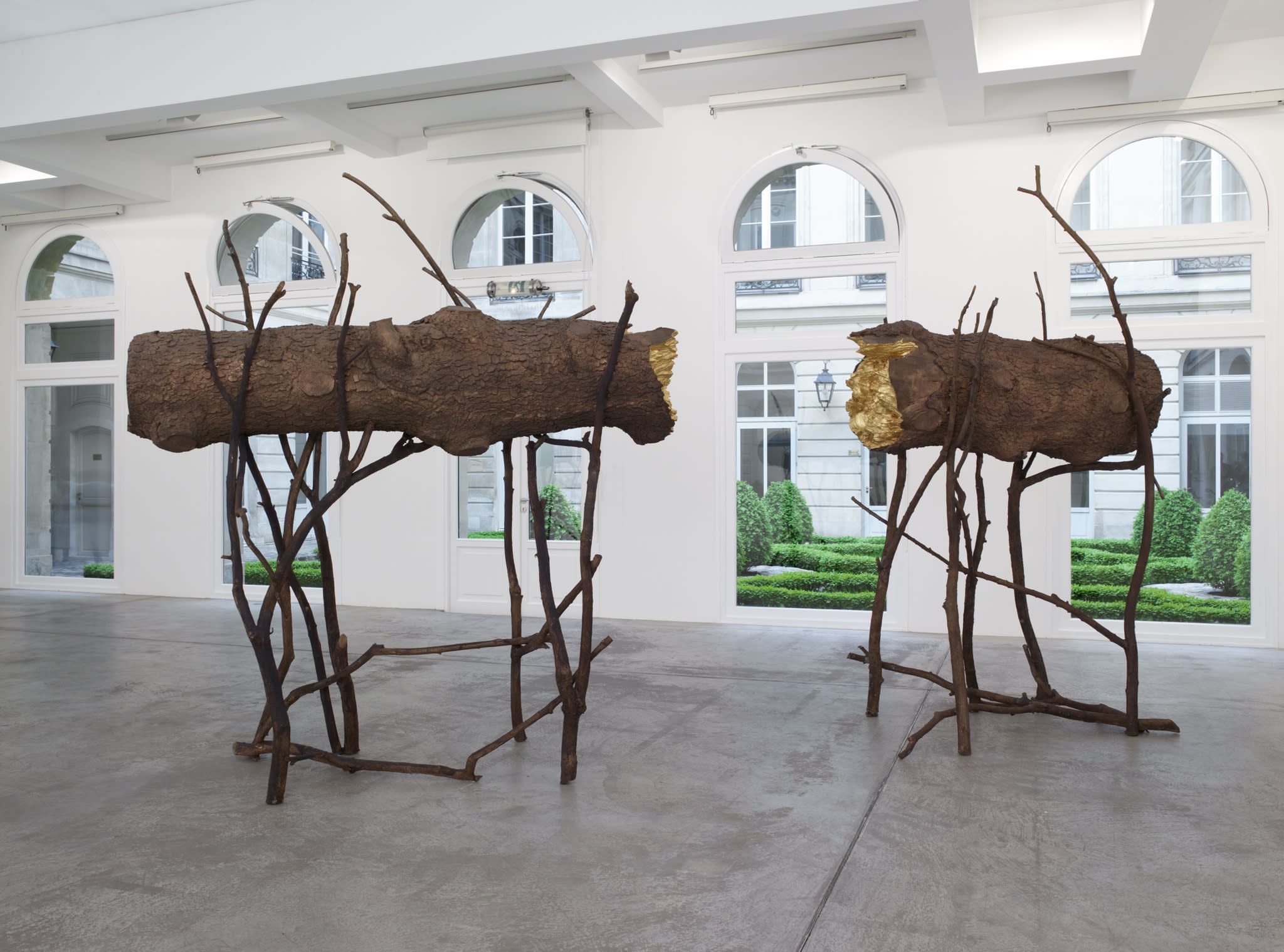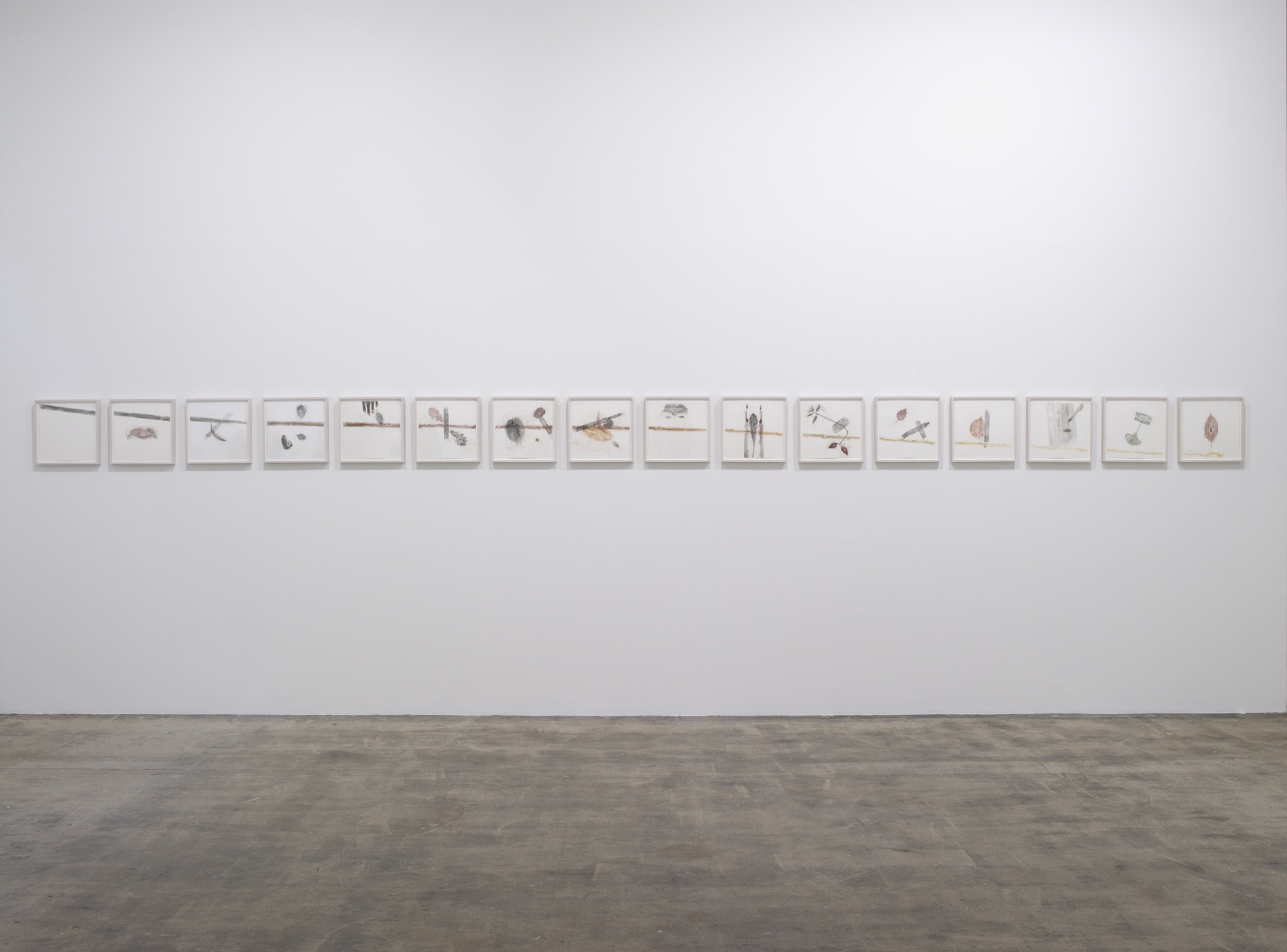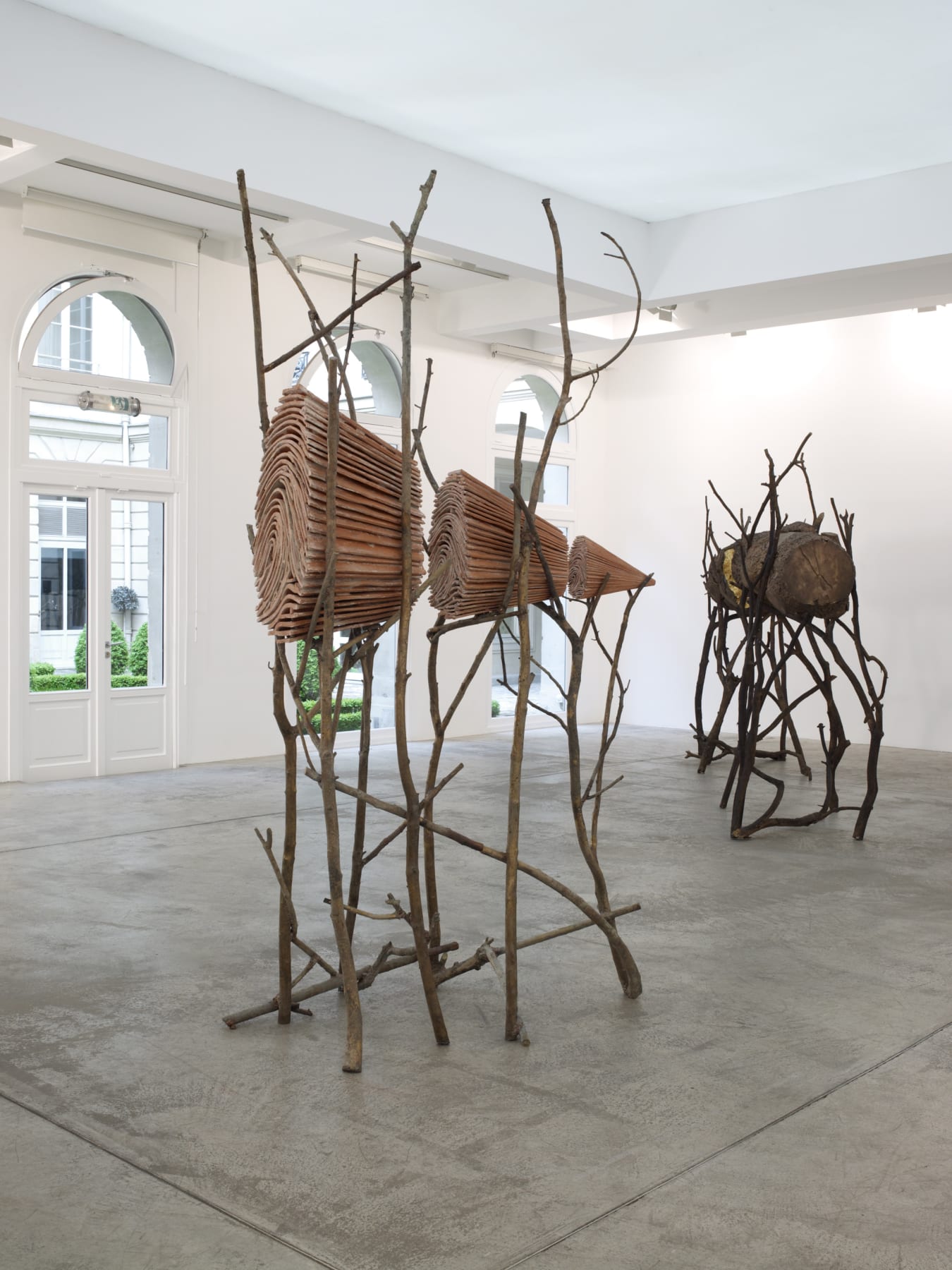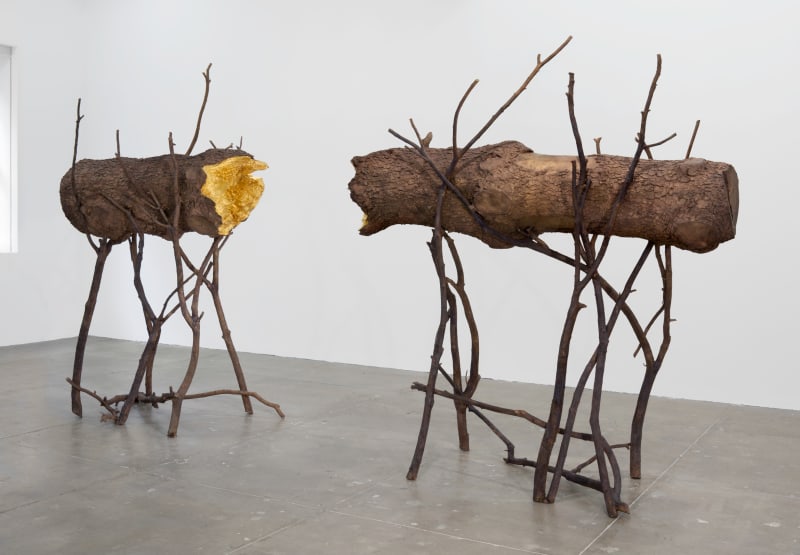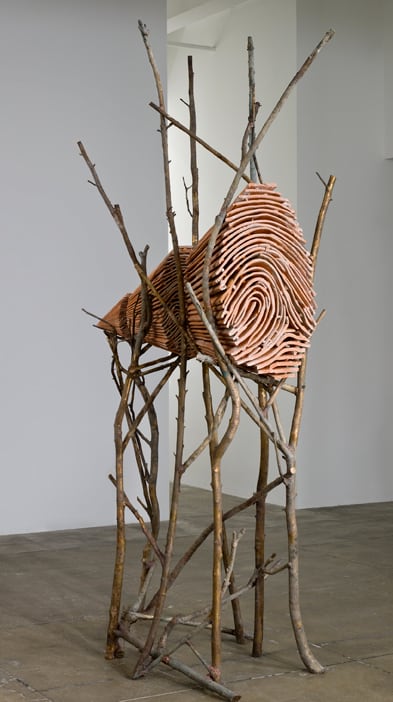Overview
Galerie Marian Goodman has the great pleasure to announce a new exhibition of works by Giuseppe Penone. The works will be on view from May 25th, just a few weeks before the inauguration of an exceptional exhibition of more than twenty monumental sculptures by Penone at the Chateau de Versailles.
Our exhibition at the gallery Le Corps d’un jardin will present works made from 1984. The show is curated by Laurent Busine, the director of the Museum of Contemporary Arts in Grand Hornu, and follows three principle themes: marriage, embrace and procession.
Giuseppe Penone: Le Corps d’un jardin
Curated by Laurent Busine
May 25 - June 22, 2013
Opening Reception: May 25, 6-8 pm
Galerie Marian Goodman has the great pleasure to announce a new exhibition of works by Giuseppe Penone. The works will be on view from May 25th, just a few weeks before the inauguration of an exceptional exhibition of more than twenty monumental sculptures by Penone at the Chateau de Versailles.
Our exhibition at the gallery Le Corps d’un jardin will present works made from 1984. The show is curated by Laurent Busine, the director of the Museum of Contemporary Arts in Grand Hornu, and follows three principle themes: marriage, embrace and procession.
Laurent Busine: “There are multiple and varied forms which make us go beyond ourselves, project into the space around us invisible bundles (of glances, traces, smells), and encounter forms and words which confront the forms and the words proffered by the sculptor who constructed and installed them; it is they that make us marvel and arrest our gaze.” 1
Each work has been selected to represent the most important themes of Penone’s work; play between gestures and the imprint, the play of light and shadow, of textures and surfaces.
Giuseppe Penone began to focus on the ‘negative space’ of sculpture when he was a student at the Academy of Arts in Turin. Penone once observed a professor modeling a bust and was drawn to the imprints the hand left in the clay. Penone places a great importance in understanding organic materials and has developed over the years a strong connection with nature. The works in the exhibition embody the poetry of his practice.
In the first room Albero e gesto, 1985-1991 and Gesto Vegetale, 1984 combine two gestures; one organic and one sculptural. Gesto Vegetale evokes the figure of a human in bronze combined with a living element, a ficus, which is in constant transformation. “Trees, when they move in space, change their shape. They remember the gesture they made. We could say that there is a resemblance between the gesture of the sculptor and the gesture of a tree frozen into bronze. This explains why I named the works this way.” 2 Created both for natural environments with planted trees and for interiors with potted plants, the series Gesti Vegetali evokes the Ovidian myth of the metamorphosis of Daphne or the transformation of the human into natural plant forms.
In the main gallery on the first floor two large sculptures composed of several different parts produce a chiaroscuro effect. Tra…., 2008 is in the form of a tree trunk split into two parts resting on branches. The gold leaf illuminates the inside of the split trunk and visually connects the two parts. The branches support the dead trunk as pallbearers would support a coffin. As with the Arbre des voyelles in the Paris Jardin des Tuileries, Penone removed the vitality of the tree; it is as if it were fossilized in bronze. Created using the technique of lost wax casting the bronze sculpture, after its oxidization, took the natural colour of a dead tree.
Ombra di terra, 2000 is the materialisation of the shadow of a fingerprint. The terra cotta furrows born from the imprint form a cone cut into three parts supported by branches in bronze.
In the gallery downstairs is a beautiful example of his thorn works in which Penone depicts magnified parts of the body. In Spine d’acacia-palmo, 2004, shown here, the thorns form the palm of a hand.
“Then I began to use thorns autonomously in works, that I linked to my research of the imprint. I have drawn an imprint with thorns, the points of contact of the skin and where the thorns are placed, represent the nerve endings of the skin. I drew the imprint on a transparent canvas covered with silk, which allowed me to stick the thorns according to the lines of the drawing. Silk being a material of animal origins, the work is also a play with three elements; animal, vegetal and mineral.” 3
In the series Skin of Leaves, Penone explores the relationship between our skin and the surface of leaves and how they resemble each other. Pelle di Foglie-2° volto-mano, 2007 made with bronze branches reaching forward from the imprint of a face evokes the projection of the human regard.
The exhibition includes a body of works on paper. 16 pagine, 2008 are compositions of leaf and skin imprints with coloured pigments.
Born in 1947 in Garessio in Italy, Giuseppe Penone was considered part of Arte Povera by Germano Celant in 1969. Since his first solo show in 1968 his work has been the subject of many exhibitions in various countries around the world (recently Toyota Municipal Museum of Art à Toyota in Japon (2009) and the Modern Art Museum of Bologne in Italy (2008)). In France the last major retrospective of his work took place at Centre Pompidou in 2004. He represented Italy at the 52nd Venice Biennial and took part in the last edition of Documenta in Kassel. Currently two exhibitions are on view at the Whitechapel Gallery in London and at the Winterthur Kunstmuseum until August 11, 2013.
This year Giuseppe Penone has been invited by the Château de Versailles to participate in its annual program for contemporary art.
His monumental sculptures will be exhibited in the celebrated gardens of Versailles on the 400th anniversary of their creation by André Le Notre. Curated by Alfred Pacquement the exhibition will be on show from the 11th June until 30 October 2013.
Giuseppe Penone lives and works in Turin.
1 Laurent Busine, Le Corps d’un jardin, Galerie Marian Goodman, Paris, 2013.
2 Giuseppe Penone dans “Entretien (15-01-03 – 11-06-03)” p. 276, in Catherine Grenier, Giuseppe Penone, Centre Pompidou, Paris, 2004.
3 Ibid., p. 286.
